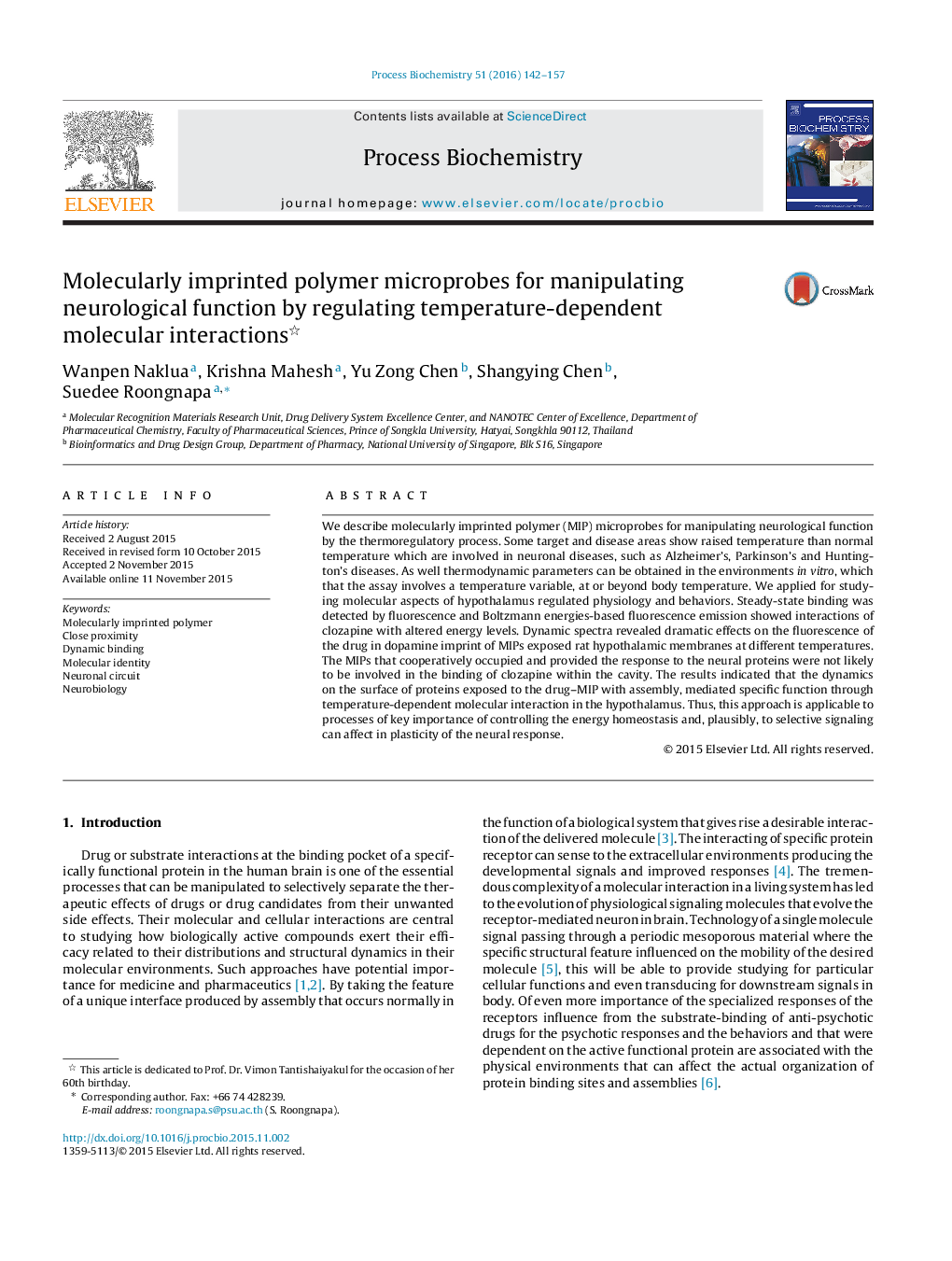| Article ID | Journal | Published Year | Pages | File Type |
|---|---|---|---|---|
| 34247 | Process Biochemistry | 2016 | 16 Pages |
•Evaluation in the hypothalamus-derived receptor-clozapine complexes influence by thermal activities.•The specific energy properties of the dopamine imprints were altered with the interfacial dynamic process.•MIP-microprobes tailored hypothalamic proteins for monitoring response by controlling the temperature.•The substrate-binding of clozapine can be increased on the proteins influencing accessibility of the quencher.•The clozapine induced higher free Zn2+ and increased the exposed protein with the adsorbed oxygen on the Zn2+.
We describe molecularly imprinted polymer (MIP) microprobes for manipulating neurological function by the thermoregulatory process. Some target and disease areas show raised temperature than normal temperature which are involved in neuronal diseases, such as Alzheimer’s, Parkinson’s and Huntington’s diseases. As well thermodynamic parameters can be obtained in the environments in vitro, which that the assay involves a temperature variable, at or beyond body temperature. We applied for studying molecular aspects of hypothalamus regulated physiology and behaviors. Steady-state binding was detected by fluorescence and Boltzmann energies-based fluorescence emission showed interactions of clozapine with altered energy levels. Dynamic spectra revealed dramatic effects on the fluorescence of the drug in dopamine imprint of MIPs exposed rat hypothalamic membranes at different temperatures. The MIPs that cooperatively occupied and provided the response to the neural proteins were not likely to be involved in the binding of clozapine within the cavity. The results indicated that the dynamics on the surface of proteins exposed to the drug–MIP with assembly, mediated specific function through temperature-dependent molecular interaction in the hypothalamus. Thus, this approach is applicable to processes of key importance of controlling the energy homeostasis and, plausibly, to selective signaling can affect in plasticity of the neural response.
Graphical abstractFigure optionsDownload full-size imageDownload as PowerPoint slide
